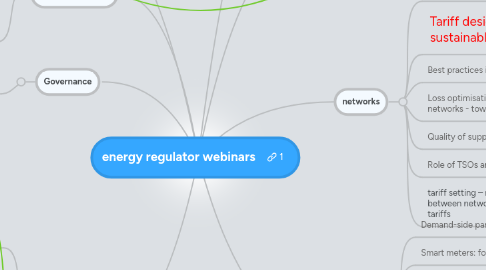energy regulator webinars
by Hans De Keulenaer


1. finance
1.1. Incentives for renewables: generation incentives / network development requirements
1.2. Incentives for reliability and energy efficiency. Linkages between infrastructure investments and cost of losses to be reinforced and harmonized in regulatory models. Integration of life cycle cost concept in the regulatory parameters.
1.3. Attracting investment in the public / private electricity sector
1.4. Competition and risk in capital investments in electricity systems
1.5. Affordability of alternative energy supply & smart grids
1.6. Best practices in privatising the public electricity sector
1.7. Cost of capital
2. Governance
2.1. Benchmarking practices
3. Energy efficiency
3.1. Institutional structures for stimulating Utility DSM projects, defining utility obligations, process map, role definition
3.2. Model regulations to encourage supply side energy efficiency e.g. mandatory disclosures ( AUS ) or tariff incentives
4. Energy Acess
4.1. Regulating mini-grids
4.2. Promoting grid extension to unelectrified areas
4.3. Loss reduction in urban slums
5. Integration issues for renewables
5.1. Network development requirements to accommodate additional capacity (planning, who pays for it, how the cost can be recovered, to whom it should be allocated...)
5.2. Electricity market design reform: from energy remuneration to capacity remuneration for generators. Consequences of increasing % of renewables generation. Relevance of reserves and balancing resources made available.
5.2.1. Reward production, not capacity
5.3. Renewable energy market : allowing the development of wind there where there is wind, solar where there is sun, at lowest cost at international level (trans-national or trans-regional approach)
5.3.1. renewables portfolio trading schemes

